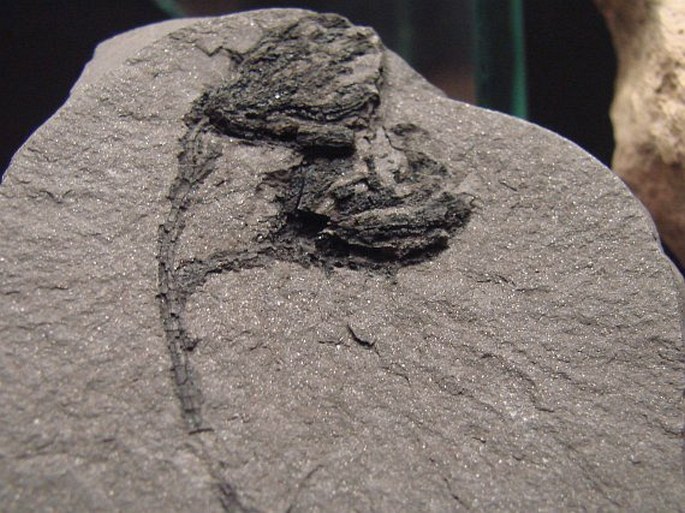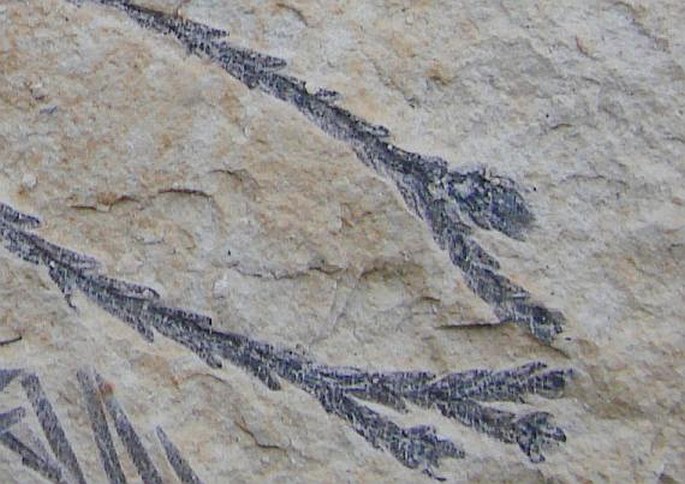Syn.: Taxodium europaeum Brongn.
Family: Cupressaceae Bartl.; Taxodiaceae Warming

Distibution: Extinct Tertiary species, it has been identified from many parts of Europe, Asia, and North America. It was a relatively common species.
Ecology: It grew in the marshes and swamps, it was the main species of plants which formed Central European brown coal deposits.
Description: Tree, fossil twigs are slender, usually only 2 mm wide, with tiny scaly needles. The seed cones are ovoid, 2–3 cm long, scales narrow, imbricated.
Note: The earliest conifers are known from the Upper Carboniferous, and reached their greatest development during the Jurassic Period. This Tertiary species is closely related with recent species Glyptostrobus pensilis from southeastern China and northern Vietnam – it is classified as a species extinct in the wild, occurs only in secondary stands.



These fossils come from the opencast mine Bílina, and quarry Libouš, Czechia (Miocene).


